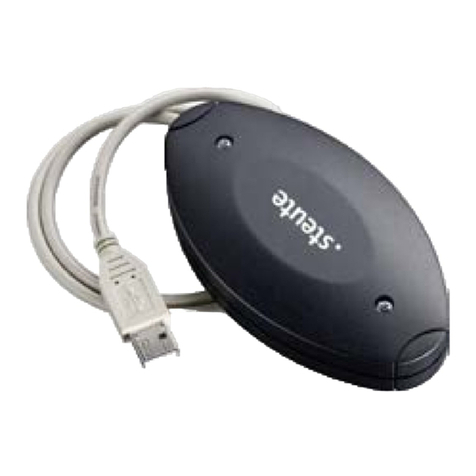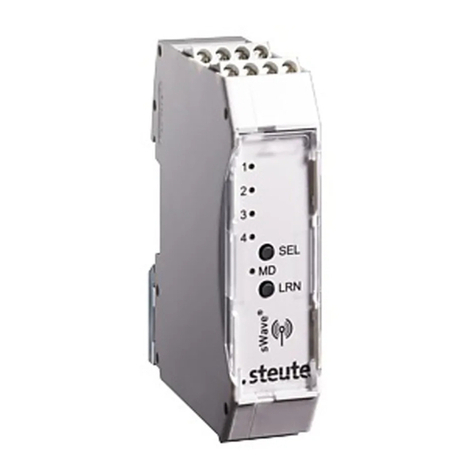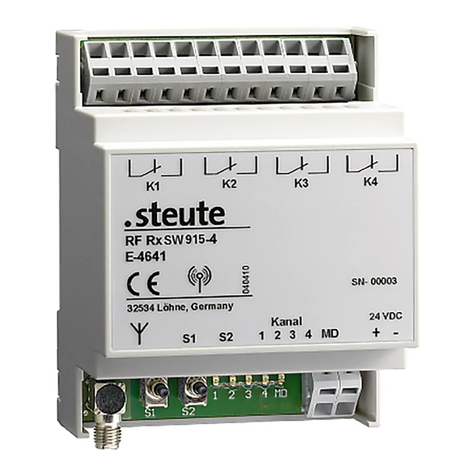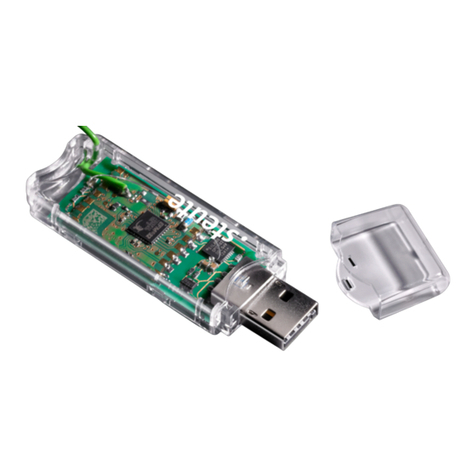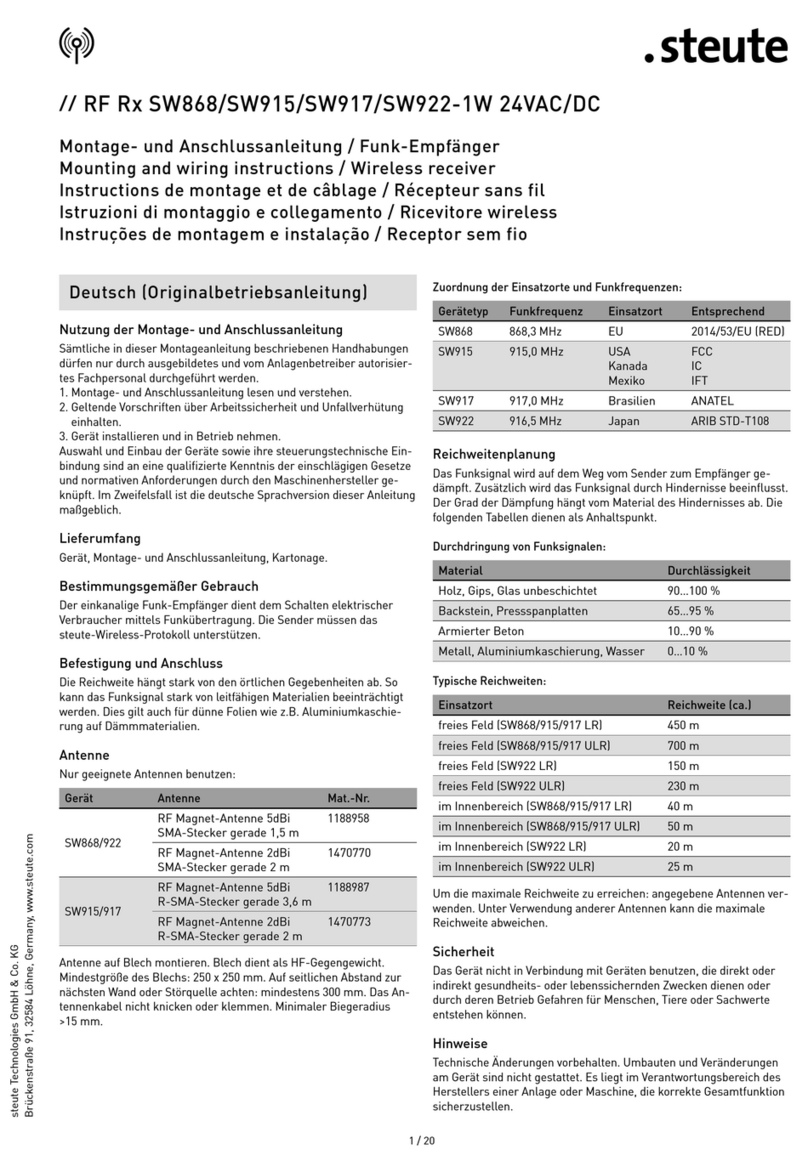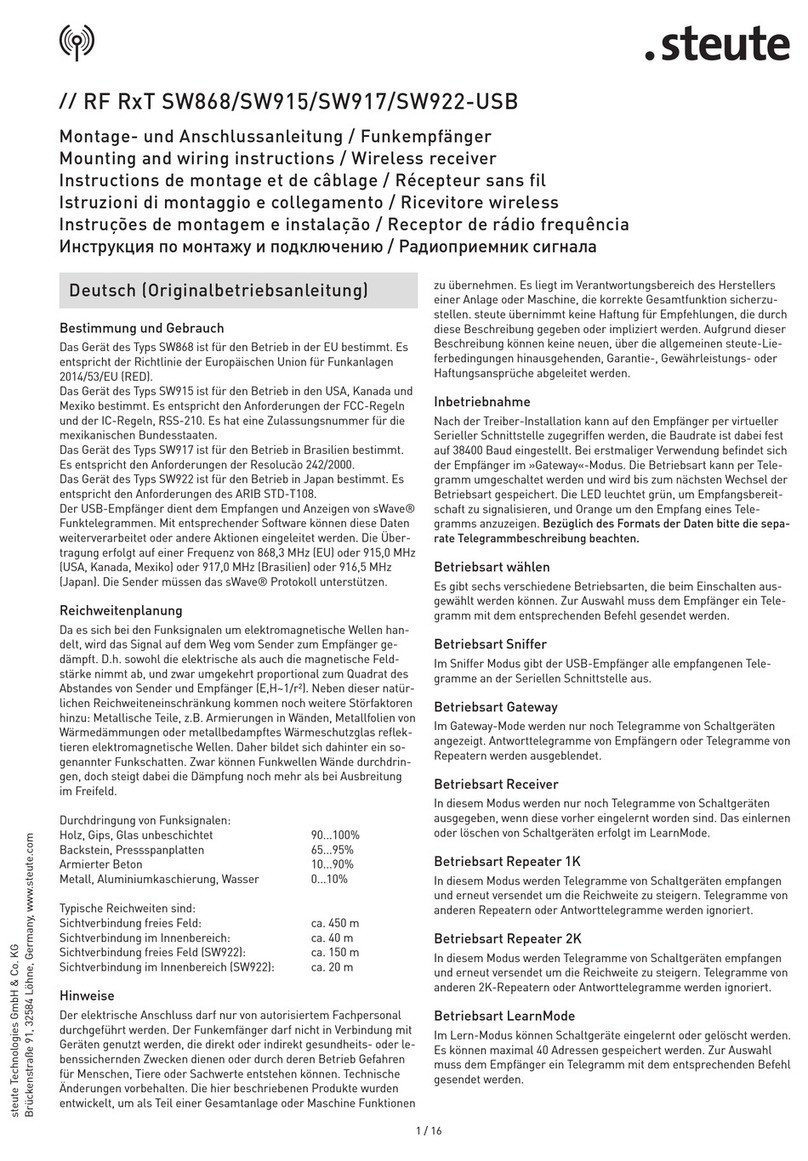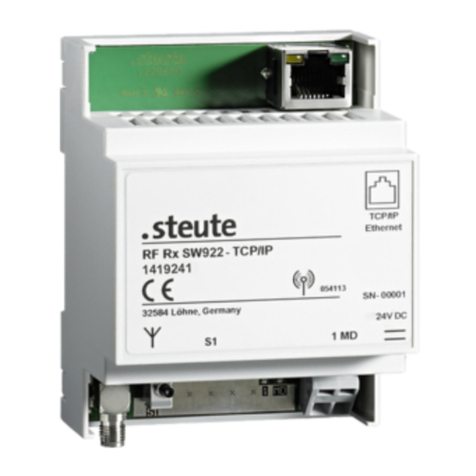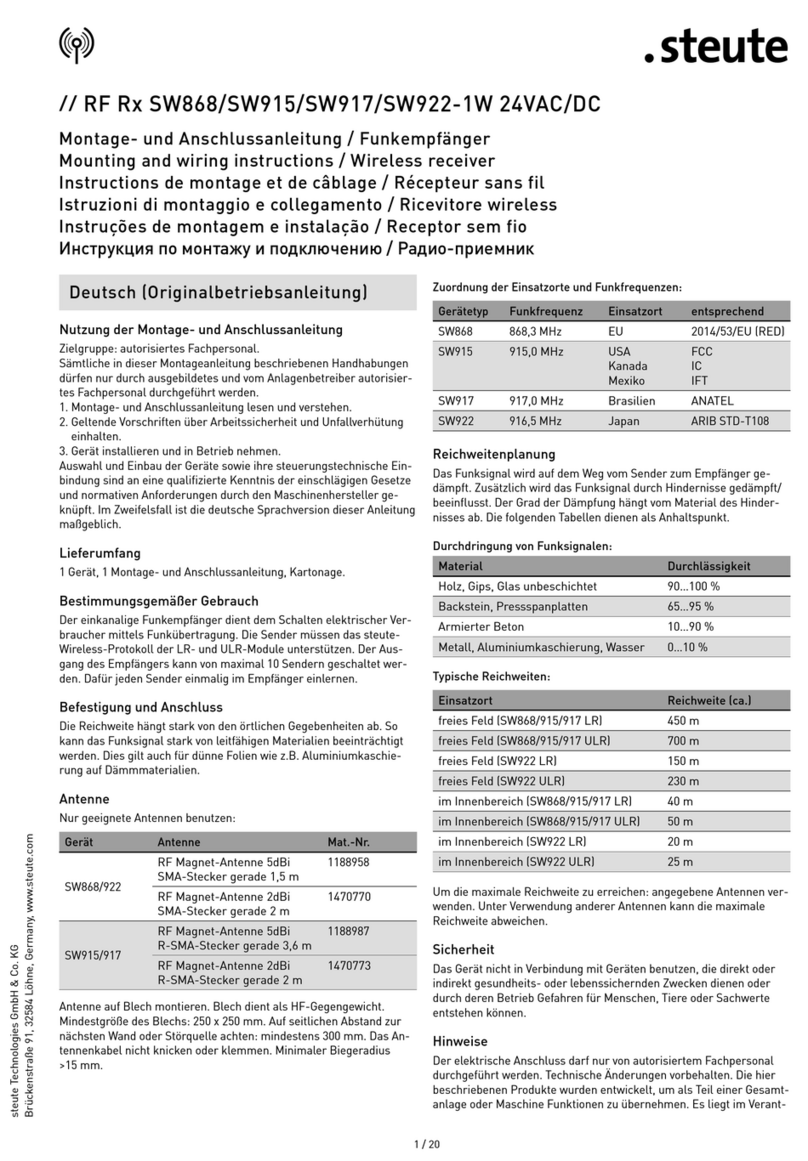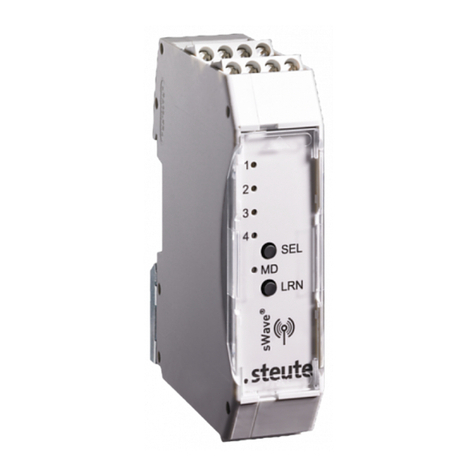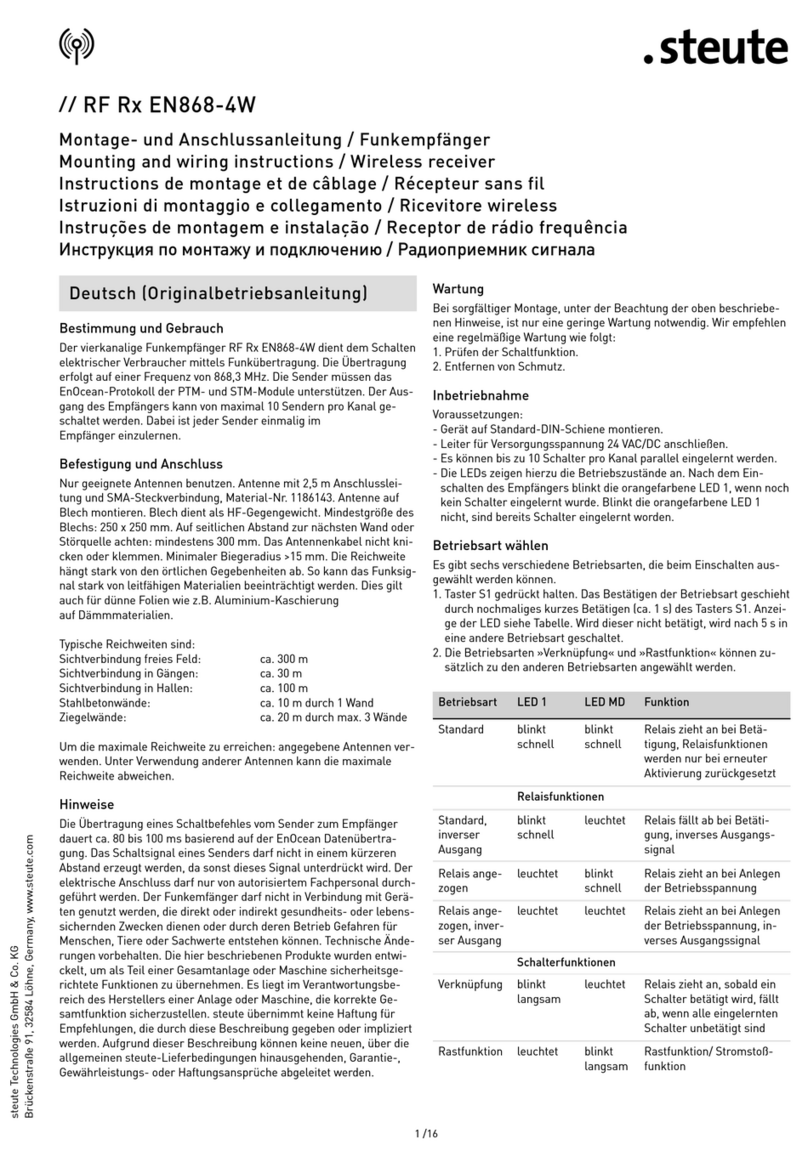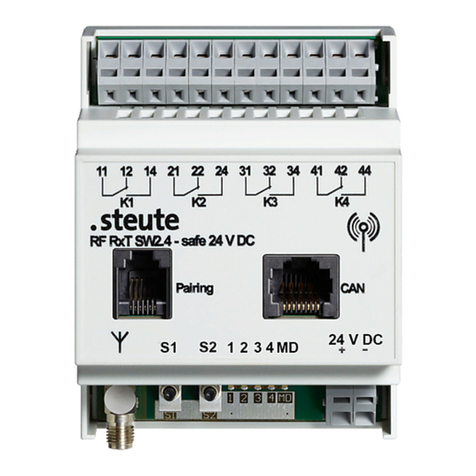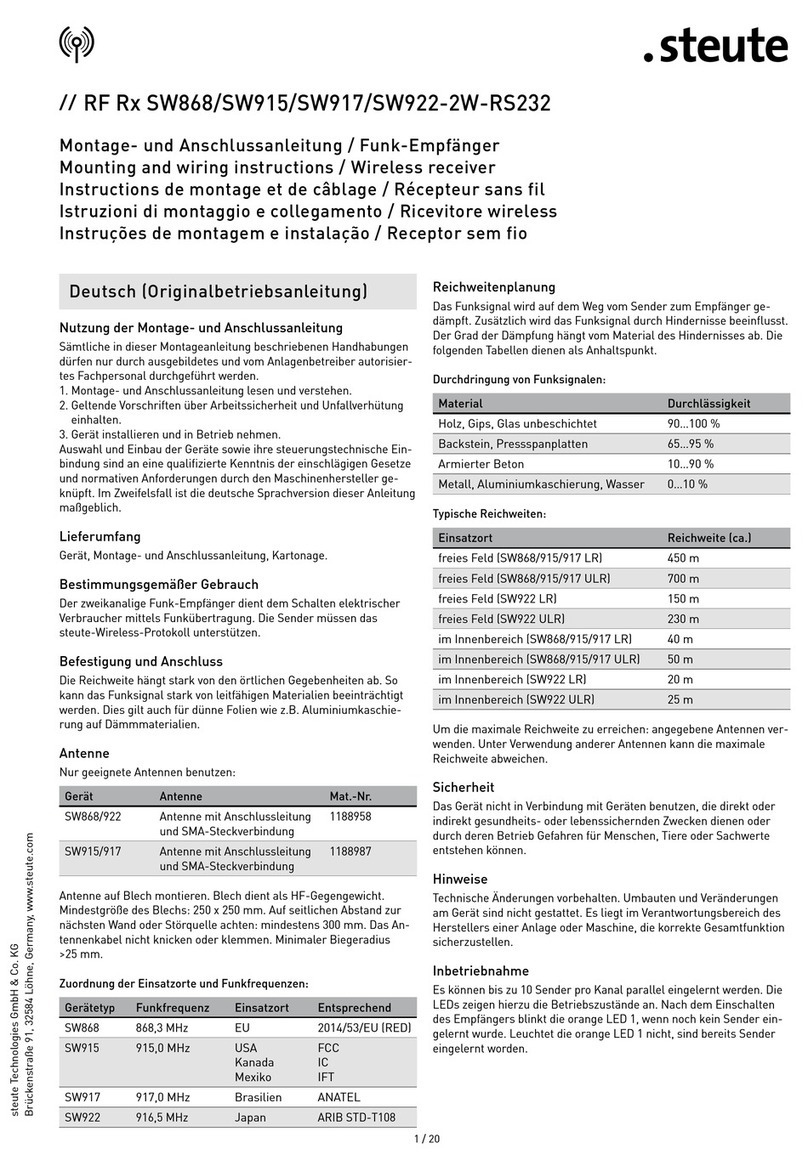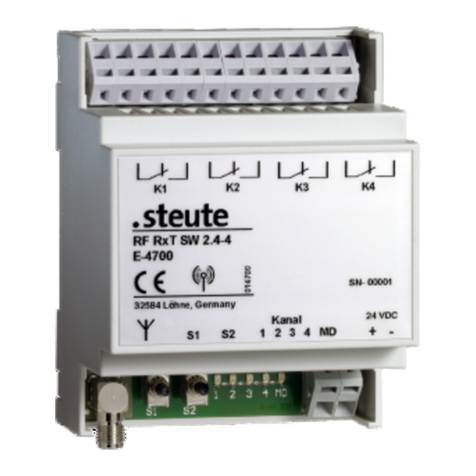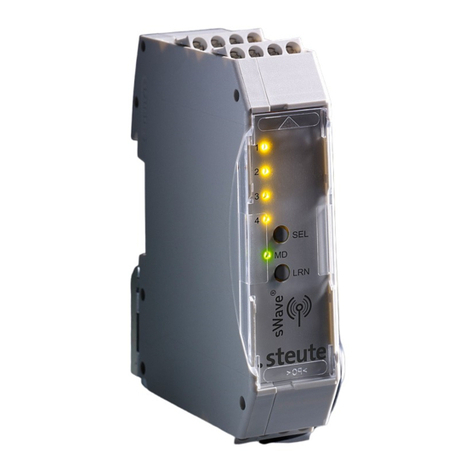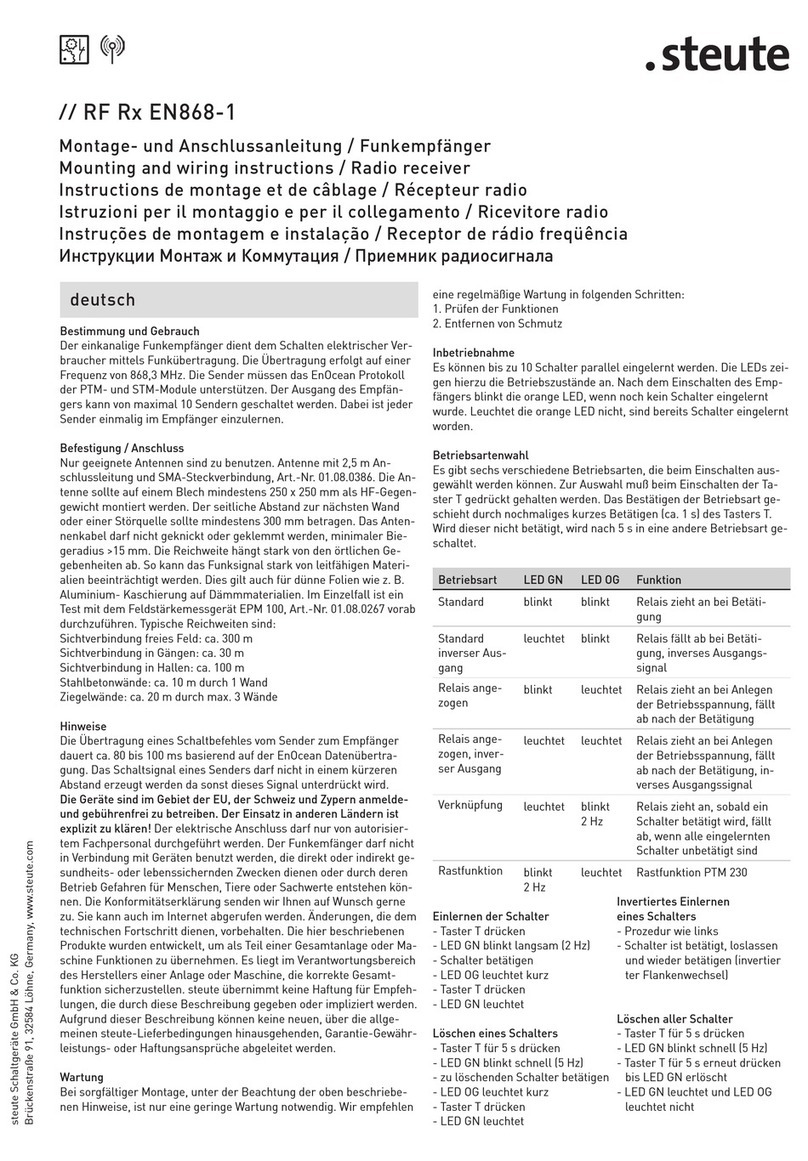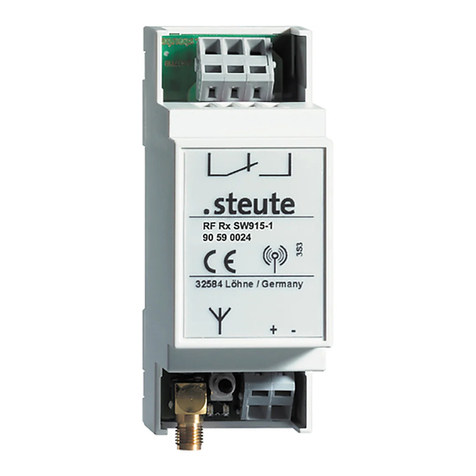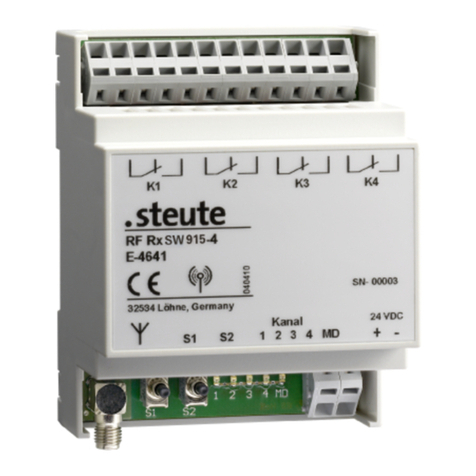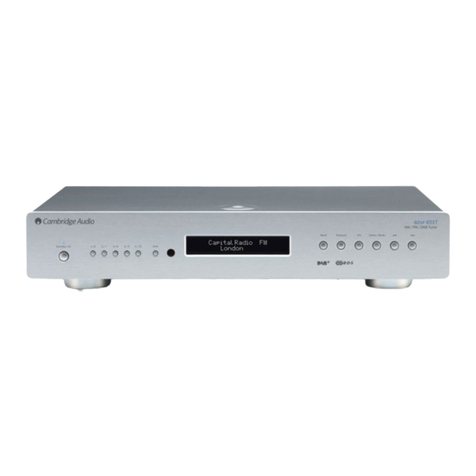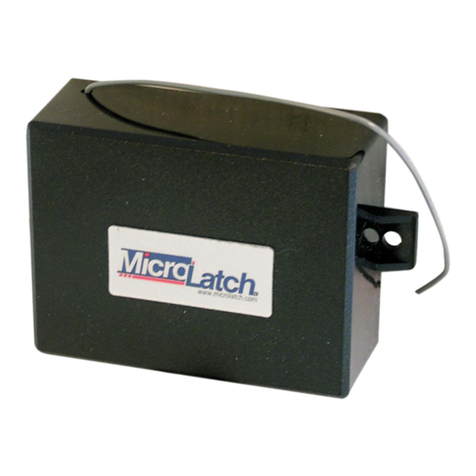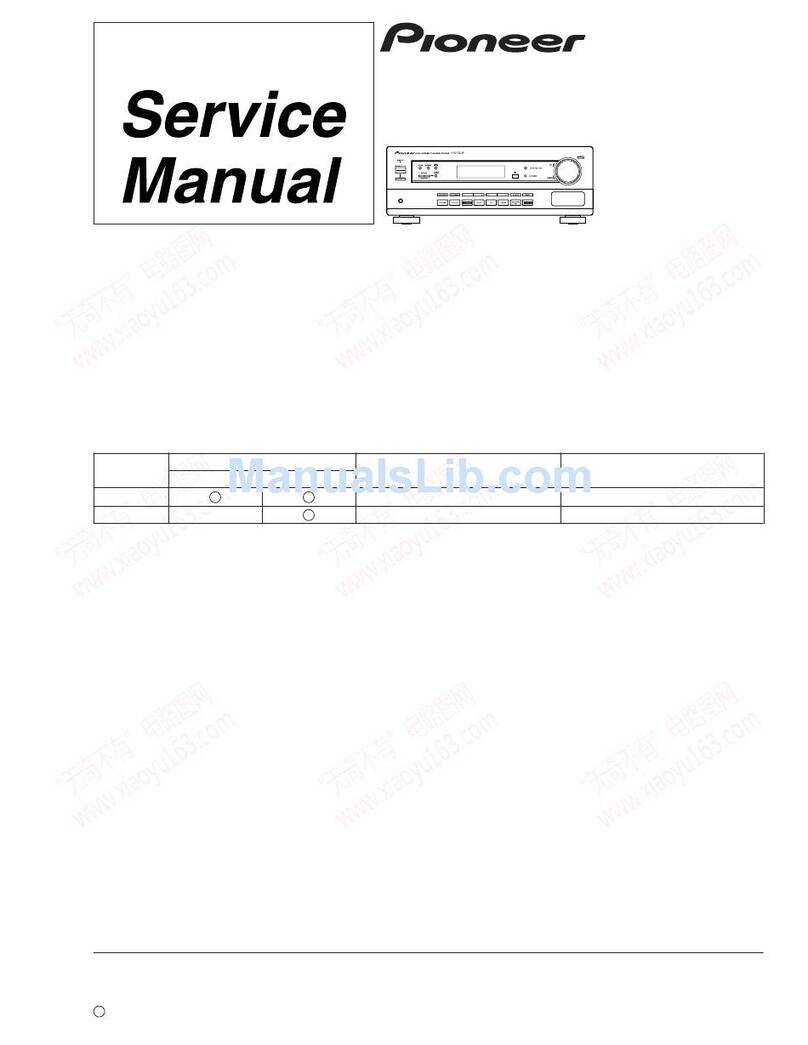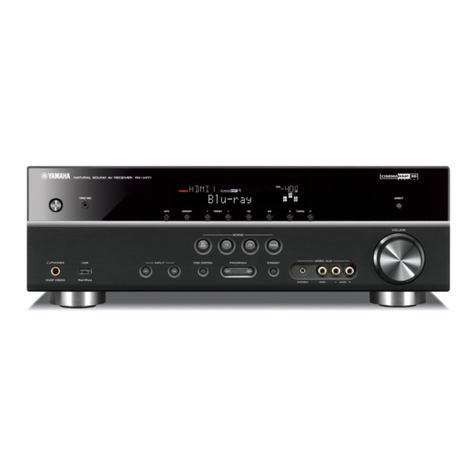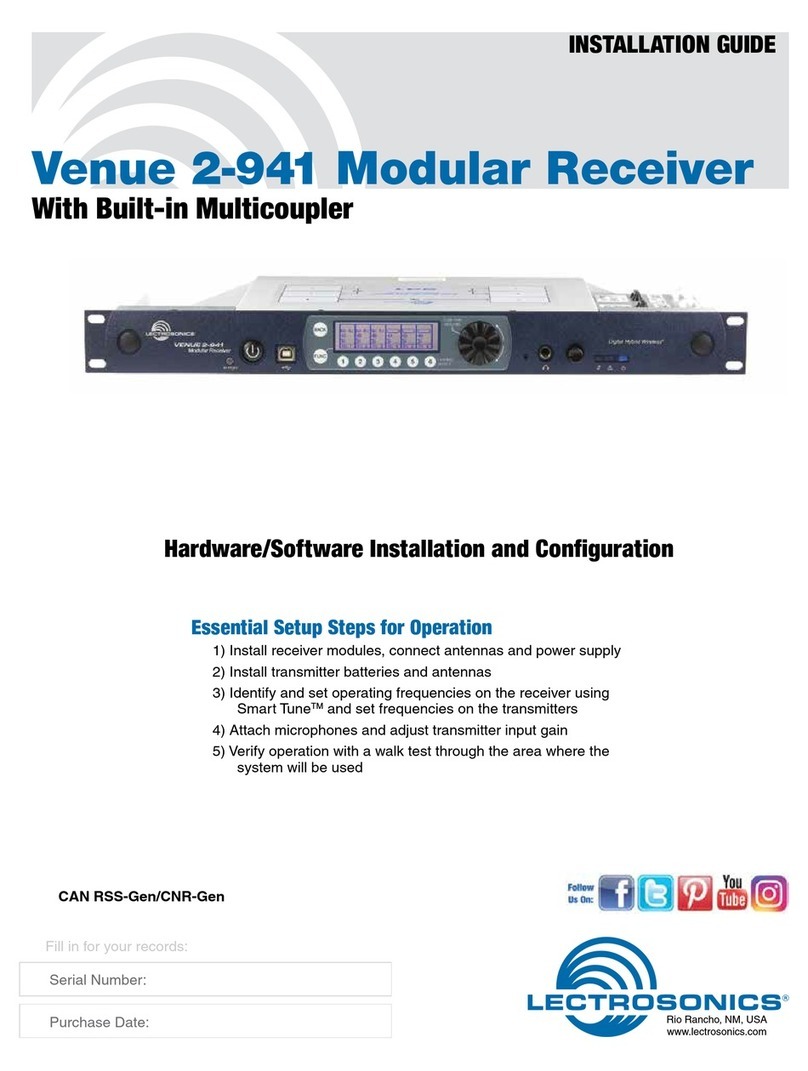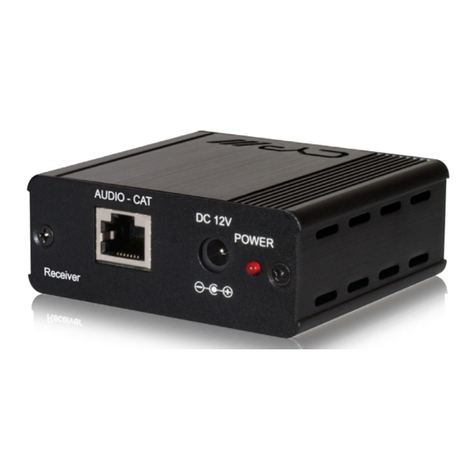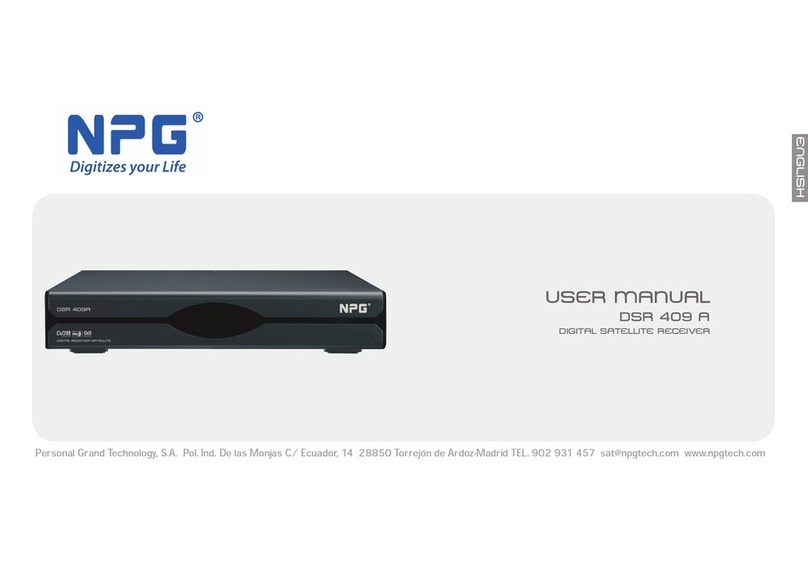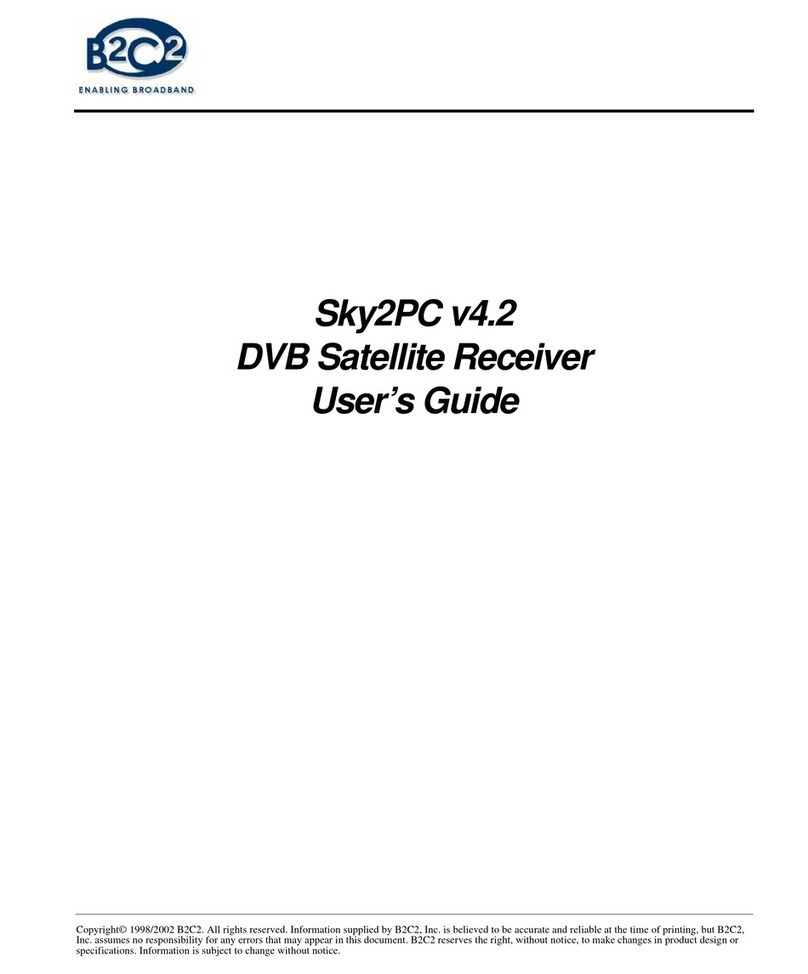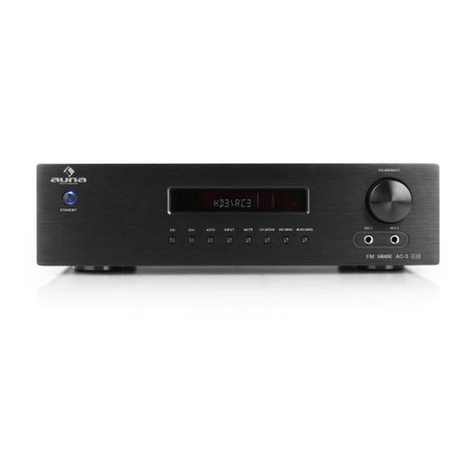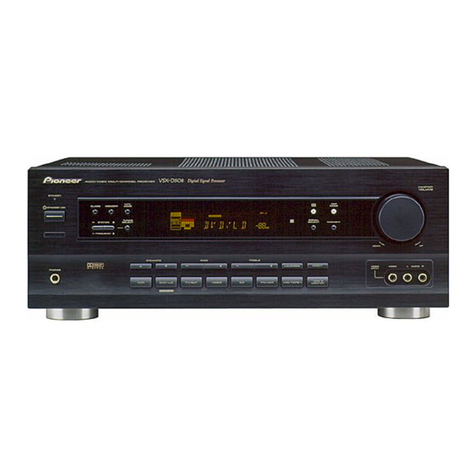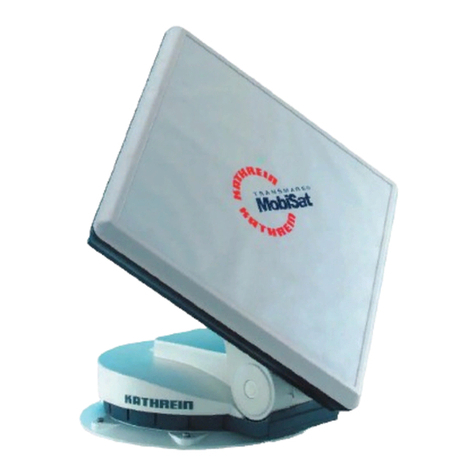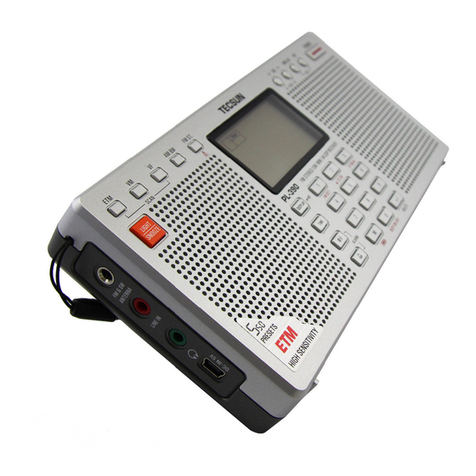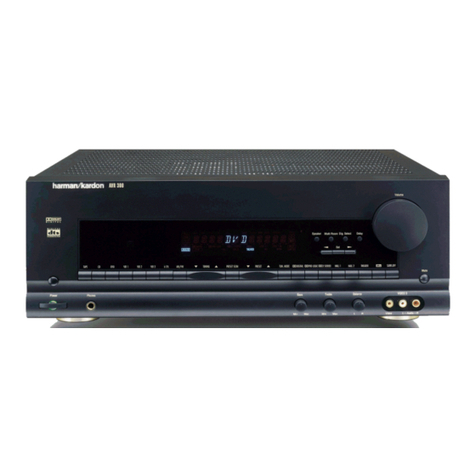
steute Schaltgeräte GmbH & Co. KG
Brückenstraße 91, 32584 Löhne, Germany, www.steute.com
deutsch
//
RF Rx EN868-2W / RF Rx EN868-2W-RS232
Montage- und Anschlussanleitung / Funkempfänger
Mounting and wiring instructions / Radio receiver
Instructions de montage et de câblage / Récepteur radio
Istruzioni per il montaggio e per il collegamento / Ricevitore radio
Instruções de montagem e instalação / Receptor de rádio freqüência
Инструкции Монтаж и Коммутация / Приемник радиосигнала
Bestimmung und Gebrauch
Der zweikanalige Funkempfänger dient dem Schalten elektrischer
Verbraucher mittels Funkübertragung. Die Übertragung erfolgt auf
einer Frequenz von 868,3 MHz. Die Sender müssen das EnOcean Pro-
tokoll der PTM- und STM-Module unterstützen. Der Ausgang des
Empfängers kann von maximal 10 Sendern pro Kanal geschaltet wer-
den. Dabei ist jeder Sender einmalig im Empfänger einzulernen.
Befestigung / Anschluss
Nur geeignete Antennen sind zu benutzen. Antenne mit 2,5 m An-
schlussleitung und SMA-Steckverbindung, Art.-Nr. 01.08.0386. Die An-
tenne sollte auf einem Blech mindestens 250 x 250 mm als HF-Gegen-
gewicht montiert werden. Der seitliche Abstand zur nächsten Wand
oder einer Störquelle sollte mindestens 300 mm betragen. Das Anten-
nenkabel darf nicht geknickt oder geklemmt werden, minimaler Bie-
geradius >15 mm. Die Reichweite hängt stark von den örtlichen Gege-
benheiten ab. So kann das Funksignal stark von leitfähigen Materialien
beeinträchtigt werden. Dies gilt auch für dünne Folien wie z. B. Alumi-
nium-Kaschierung auf Dämmmaterialien. Im Einzelfall ist ein Test mit
dem Feldstärkemessgerät EPM 300, Art.-Nr. 01.08.0416 vorab durch-
zuführen. Typische Reichweiten sind:
Sichtverbindung freies Feld: ca. 300 m
Sichtverbindung in Gängen: ca. 30 m
Sichtverbindung in Hallen: ca. 100 m
Stahlbetonwände: ca. 10 m durch 1 Wand
Ziegelwände: ca. 20 m durch max. 3 Wände
Hinweise
Die Übertragung eines Schaltbefehles vom Sender zum Empfänger
dauert ca. 80 bis 100 ms basierend auf der EnOcean Datenübertra-
gung. Das Schaltsignal eines Senders darf nicht in einem kürzeren
Abstand erzeugt werden da sonst dieses Signal unterdrückt wird. Die
Geräte sind im Gebiet der EU, der Schweiz, Zypern und in Slowenien
anmelde- und gebührenfrei zu betreiben. Der Einsatz in anderen Län-
dern ist explizit zu klären! Der elektrische Anschluss darf nur von au-
torisiertem Fachpersonal durchgeführt werden. Der Funkemfänger
darf nicht in Verbindung mit Geräten benutzt werden, die direkt oder
indirekt gesundheits- oder lebenssichernden Zwecken dienen oder
durch deren Betrieb Gefahren für Menschen, Tiere oder Sachwerte
entstehen können. Die Konformitätserklärung senden wir Ihnen auf
Wunsch gerne zu. Sie kann auch im Internet abgerufen werden. Ände-
rungen, die dem technischen Fortschritt dienen, vorbehalten. Die hier
beschriebenen Produkte wurden entwickelt, um als Teil einer Gesamt-
anlage oder Maschine Funktionen zu übernehmen. Es liegt im Verant-
wortungsbereich des Herstellers einer Anlage oder Maschine, die kor-
rekte Gesamtfunktion sicherzustellen. steute übernimmt keine Haf-
tung für Empfehlungen, die durch diese Beschreibung gegeben oder
impliziert werden. Aufgrund dieser Beschreibung können keine neuen,
über die allgemeinen steute-Lieferbedingungen hinausgehenden, Ga-
rantie-Gewährleistungs- oder Haftungsansprüche abgeleitet werden.
Wartung
Bei sorgfältiger Montage, unter der Beachtung der oben beschriebe-
nen Hinweise, ist nur eine geringe Wartung notwendig. Wir empfehlen
eine regelmäßige Wartung in folgenden Schritten:
1. Prüfen der Funktionen
2. Entfernen von Schmutz
Inbetriebnahme
Es können bis zu 10 Schalter pro Kanal parallel eingelernt werden. Die
LEDs zeigen hierzu die Betriebszustände an. Nach dem Einschalten
des Empfängers blinkt die orange LED 1, wenn noch kein Schalter ein-
gelernt wurde. Leuchtet die orange LED 1 nicht, sind bereits Schalter
eingelernt worden.
Betriebsartenwahl
Es gibt sechs verschiedene Betriebsarten, die beim Einschalten aus-
gewählt werden können. Zur Auswahl muß beim Einschalten der Ta-
ster S1 gedrückt gehalten werden. Das Bestätigen der Betriebsart ge-
schieht durch nochmaliges kurzes Betätigen (ca. 1 s) des Tasters S1.
Wird dieser nicht betätigt, wird nach 5 s in eine andere Betriebsart ge-
schaltet. Die Betriebsarten »Verknüpfung« und »Rastfunktion« kön-
nen zusätzlich zu den anderen Betriebsarten angewählt werden.
Betriebsart LED 1 LED MD Funktion
Standard blinkt
schnell
blinkt
schnell
Relais zieht an bei Betäti-
gung
Standard
inverser
Ausgang
blinkt
schnell
leuchtet Relais fällt ab bei Betäti-
gung, inverses Ausgangs-
signal
Relais ange-
zogen leuchtet blinkt
schnell
Relais zieht an bei Anlegen
der Betriebsspannung
Relais ange-
zogen, inver-
ser Ausgang
leuchtet leuchtet Relais zieht an bei Anlegen
der Betriebsspannung, in-
verses Ausgangssignal
Verknüpfung blinkt
langsam
leuchtet Relais zieht an, sobald ein
Schalter betätigt wird, fällt
ab, wenn alle eingelernten
Schalter unbetätigt sind
Rastfunktion leuchtet blinkt
langsam
Rastfunktion/ Stromstoß-
funktion
Einlernen der Schalter
- Taster S1 ca. 1 s betätigen
- LED MD blinkt langsam (2 Hz)
- Taster S2 zur Kanalwahl drücken
- den einzulernenden Schalter/ Befehlsgerät betätigen
- die dem Klanal entsprechende LED erlischt kurz
- zum Verlassen des Einlern-Modus Taster S1 ca. 1 s betätigen
- die LED MD leuchtet
Löschen eines Schalters
- Taster S1 für 5 s drücken bis LED MD schnell blinkt
- Taster S2 zur Kanalwahl drücken
- zu löschenden Schalter/Befehlsgerät betätigen
- die dem Klanal entsprechende LED erlischt kurz
- zum Verlassen des Lösch-Modus Taster S1 ca. 1 s betätigen
- die LED MD leuchtet grün













